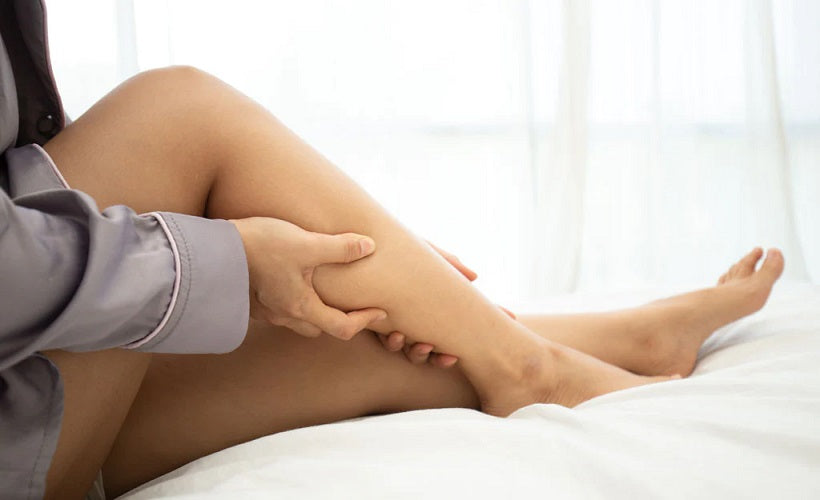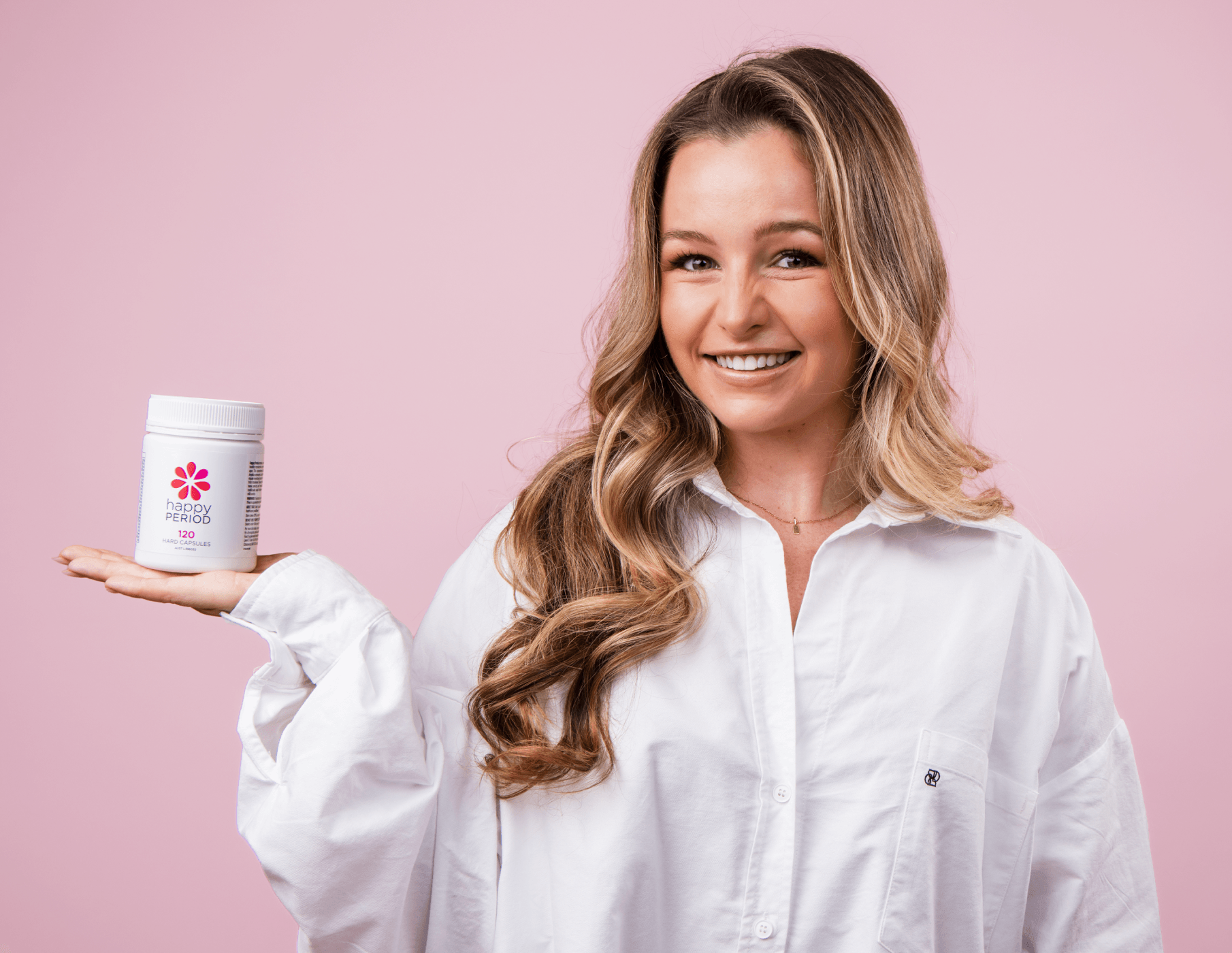Simple Tips to Relieve Fluid Retention
By Tilly Anderson

What is fluid retention?
Fluid retention occurs when there is an imbalance between the fluids and electrolytes in the body. Regulating water balance is essential for our survival and although the body has an innate ability to restore balance, environmental factors can contribute to the build-up of fluids. With poor circulation, hydration imbalances, and impaired function of transporting fluids, water may accumulate within the tissues throughout the body.
Common causes of fluid retention include:
- A diet high in sodium and processed food
- Inactivity from standing or sitting over a prolonged period of time
- Hormonal changes in relation to the menstrual cycle, pregnancy, and menopause
- Inflammation in the tissues from a highly acidic diet, trauma, infection, or even an allergy
- Stagnant lymph and impaired lymphatic function
How do I protect myself against fluid retention?
Generally, good health is the key to eliminating or avoiding fluid retention. We suggest you follow and tick off these strategies as a natural alternative to restore fluid balance in the body:
-
Embark on a whole-food diet that’s both alkaline and anti-inflammatory. Our latest HAPPY HEALTHY YOU book features over a hundred of our curated recipes that can help restore fluid homeostasis and reduce inflammation.

-
Drink a good amount of water throughout the day. Aim for about 2 litres per day and reduce your intake of table salt and diuretic drinks such as alcohol, black tea, and coffee.
-
Add a pinch of Himalayan or Celtic sea salt to your water bottle if you tend to sweat or drink large amounts of water. The salt provides the body with essential minerals to maintain homeostasis and counters the negative effects of sodium. While it is essential for us to stay hydrated, it is equally important to have a good balance of water and minerals.
-
Regular exercise, stretching, and maintaining good posture help to improve lymphatic flow and circulation to support transportation of fluids, fat, waste products, and other unwanted materials.
-
Avoid standing or sitting for a prolonged time and take frequent breaks from work to move your body regularly throughout the day. Follow the exercises in the next section of this article.
- Herbs such as parsley and dandelion root are two natural diuretics that can be consumed as a tea or supplement. Dandelion leaf tea helps improve kidney filtration and function. Both herbs also give the liver a nice and gentle cleanse!
-
Consume one freshly pressed green veggie juice daily to reduce free radicals and support liver detoxification and kidney filtration. Make sure it contains celery!
- Support hormonal balance with herbal medicines found in Happy Hormones to assist with fluid retention associated with perimenopause and PMS.
-
A self-care practice such as dry body brushing is a great way to further support the lymphatic system and reduce the occurrence of fluid retention.
- Hot and cold showers can also be implemented as a therapeutic approach to stimulate circulation, and lymphatic flow and tone the autonomic nervous system. Start with a hot shower for 5 minutes then end with cold water running for 1 minute.
Movement practices to help and reduce fluid retention
-
Aim to reach your 10,000 steps daily for overall health and well-being. Take the stairs whenever possible, be active throughout your day, and avoid being stagnant for long hours.
- Implement Sun Salutations. Sun Salutations are really effective in increasing circulation, enhancing lymphatic flow and improving respiratory health. At least 2-6 rounds of Sun Salutations are recommended, preferably done in the morning.
-
Mountain pose with heel taps.
This is a very simple yet quite effective yoga pose in which we include tapping of the heels to stimulate a vibration through the body to support movement of fluids from the lower extremity back to the circulatory system.

- Standing Forward Fold

This pose opens up the complete back line of the body, improves lymphatic flow and stimulates blood flow circulation to the heart. Stay in this pose for 10-15 deep breaths and slowly rise up to Mountain pose Tadasana again.
- Legs Up The Wall

Summary
These simple tools are a perfect practice to implement at any time of the day to support lymphatic flow and reduce fluid retention. The movement can be done in just 15 to 30 minutes, depending on how many Sun Salutations you do and how long you spend resting in the Legs Up The Wall pose.
Together with the diet and lifestyle recommendations mentioned above, these specific yoga asanas will help address stagnation, enhance circulation, reduce swelling and discomfort, and improve your overall health and well-being.
REFERENCES
Danziger, J., & Zeidel, M. L. (2015). Osmotic homeostasis. Clinical Journal of the American Society of Nephrology: CJASN, 10(5), 852–862. https://doi.org/10.2215/CJN.10741013
Johnson A. K. (2007). The sensory psychobiology of thirst and salt appetite. Medicine and science in sports and exercise, 39(8), 1388–1400. https://doi.org/10.1249/mss.0b013e3180686de8
O'Brien, J. G., Chennubhotla, S. A., & Chennubhotla, R. V. (2005). Treatment of edema. American family physician, 71(11), 2111–2117.
https://www.aafp.org/afp/2005/0601/p2111.html
Kooti, W., & Daraei, N. (2017). A Review of the Antioxidant Activity of Celery ( Apium graveolens L). Journal of evidence-based complementary & alternative medicine, 22(4), 1029–1034.
https://doi.org/10.1177/2156587217717415
Pollock, J. S., Ryan, M. J., Samson, W. K., & Brooks, D. P. (2014). Water and electrolyte homeostasis brings balance to physiology. American journal of physiology. Regulatory, integrative and comparative physiology, 307(5), R481–R483. https://doi.org/10.1152/ajpregu.00246.2014
Stachenfeld N. S. (2014). Hormonal changes during menopause and the impact on fluid regulation. Reproductive sciences (Thousand Oaks, Calif.), 21(5), 555–561. https://doi.org/10.1177/1933719113518992








Leave a comment
This site is protected by hCaptcha and the hCaptcha Privacy Policy and Terms of Service apply.